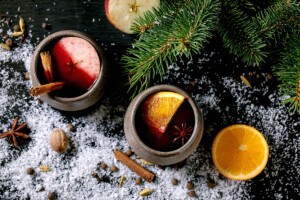Liquid Diet: The Cult of Malört

Letherbee Distillers out of Chicago is now available in Boston. Their version of Malort, a relatively obscure Swedish liqueur dominated by wormwood, is called Besk. Photo Provided.
Malört, the bitter wormwood-based liqueur that is a cult favorite among bartenders, particularly in Chicago, has finally made its way into Boston thanks to Letherbee Distillers. A variation of the Swedish liqueur, brännvin, malört has long had an association with the Windy City because of the brand Jeppson’s, which originated in Chicago during the Prohibition era. The liqueur is so bitter that it’s often pushed on to patrons as a dare. The Jeppson’s label once posed the question, “Are you man enough?” Comedian John Hodgman often passes out shots during public appearances just to see people wither under its pungency. And the pained, scrunched-up reaction to drinking the liqueur, simply referred to as “malört face,” has been captured on websites like Buzzfeed and Thrillist.
But Letherbee’s version, called Bësk (Swedish for “bitter”) is a different animal. Based on a recipe developed by Robert Haynes, owner of the Analog bar in Chicago, Bësk is far more complex example, albeit still an acquired taste. “Bësk is actually a little more fitting because although there’s wormwood in it, there’s a lot of other complementary flavors,” Haynes says. “Wormwood is front and center, but there’s also gentian, which is even more bitter. Gentian is the gnarliest stuff on the planet. So you have these big, bitter, side-of-the-tongue flavors, but we didn’t want to be as one-dimensional as other malörts. We approached it like we would a cocktail and added complementary flavors such as grapefruit rind—which is bitter, but bright—then a little bit of elderflower, juniper, and some ground star anise.”
Haynes developed the recipe while managing the bar at Chicago’s The Violet Hour, a two-time James Beard nominee for Outstanding Bar Program. Motivated to craft something that would trump the bitter Italian Amaros that were booming during the time of his six-year tenure, Haynes finally settled on something that he felt was good enough to produce on a large scale.
“Once I had the recipe dialed in to a place that I was happy with, I contacted my friend Brent [Engel], who had been making gin under the Letherbee name for a year or two,”Haynes says. “I just pitched him on it and convinced him to make a limited 50-case run for The Violet Hour. At the time it was still called Malört and people just went nuts for it.”
Letherbee has since expanded production and changed its name, due to a trademark battle initiated by Jeppson’s. Like Fernet Branca or Chartreuse, industry personnel have gravitated to Haynes’ bitter concoction paired with a beer back. “When I first developed it, I thought it would be easier to use in cocktails, but it’s still a challenging ingredient to work with because it’s such a bully in drinks,” Haynes says. “Because it is so boozy, you have to really counterbalance it with things that are soft and floral like blanc vermouth, honey, and grapefruit. It works in cocktails, but I think it’s much better off neat.”
Last month, Letherbee’s Bësk made its debut in New York and Massachusetts and several area bars were quick to pick up the product. Adventurous drinkers can now sample the Chicago specialty at Coppa, Toro, Fairsted Kitchen, Greene Street, State Park, Blue Dragon, and The Gallows.
“People in Chicago are really open to trying things that might be challenging at first,” Haynes says. “There’s a great restaurant close to my house called Longman & Eagle that serves duck testicles. Mind you, this is a very popular Michelin-starred restaurant. Or you can go to Hot Doug’s, which is super famous, and there will be 50 people waiting in line, in the rain, to eat a rattlesnake hotdog. The response [to Bësk] has been great here, but I’m even more surprised by the enthusiasm we’ve already seen on the East Coast. People are having this flavor profile for the first time and they’re loving it.”


